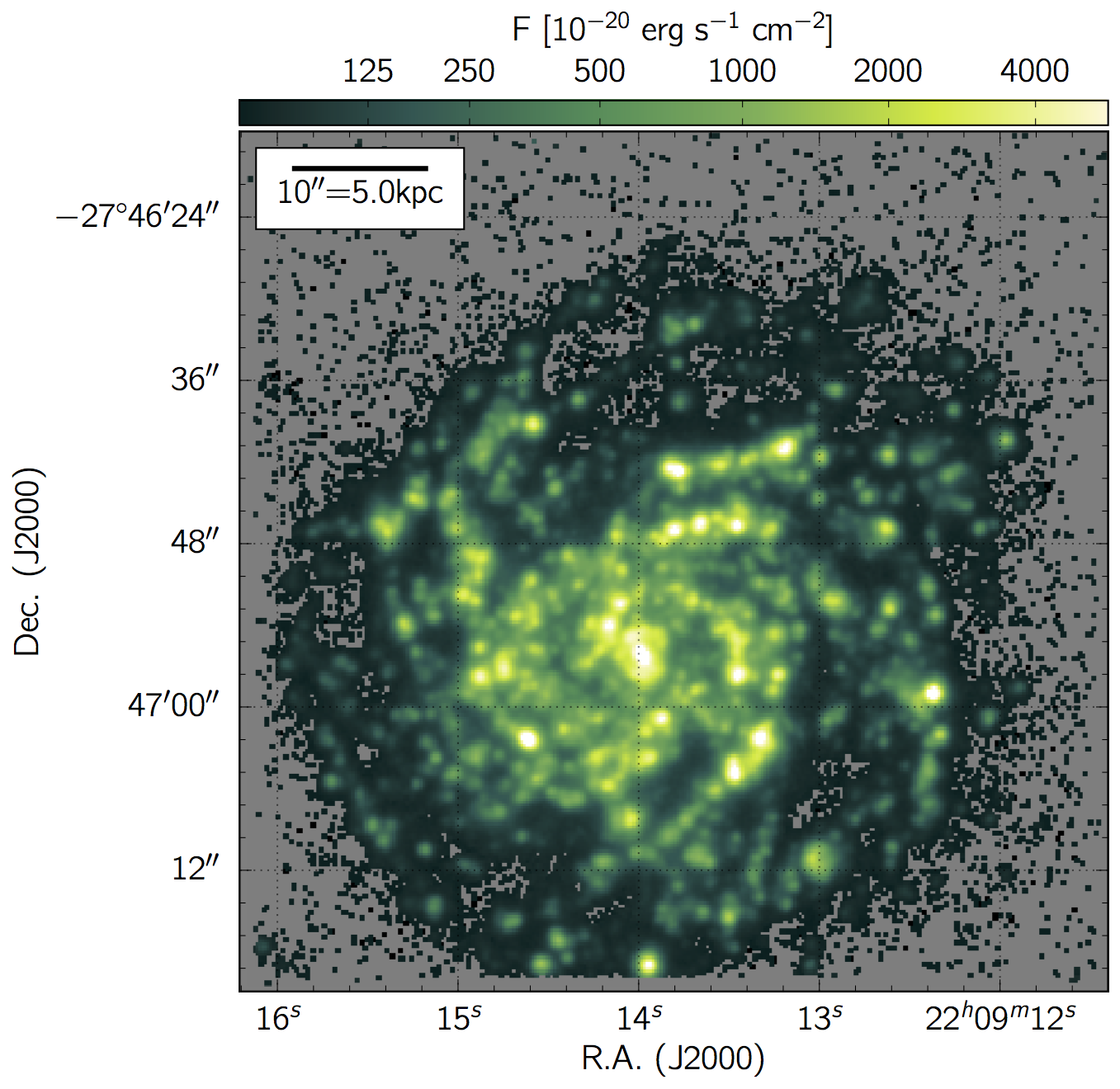brutus 0.3.1¶
Warning
These pages describe brutus 0.3.1. The module is currently under construction, and NOT yet ready for deployment. For more information, send an email to frederic.vogt@alumni.anu.edu.au.

![_images/20_HCG91c_RGB_[SII]+-[NII]-[OIII].png](_images/20_HCG91c_RGB_[SII]+-[NII]-[OIII].png)
brutus is a set of Python modules designed to process datacubes from Integral Field Spectrographs, and in particular MUSE on the VLT/UT-4 at Paranal Observatory. The focus of brutus is primarily set on performing a detailed emission line analysis, including a good quality removal of the continuum. brutus is suitable for processing both extragalactic targets (e.g. star-forming galaxies) and galactic objects (PNs, SNRs, HII regions).
Some of the features of brutus include:
- the direct use of reduced datacubes (e.g. produced from the official MUSE data reduction pipeline) without requiring prior modifications,
- the fitting of the stellar/nebular continuum using either a non-parametric Locally Weighted Scatterplot Smoothing (LOWESS) technique, or alternatively using ppxf ,
- the fitting of emission lines via
mpfitthat uses the Levenberg-Marquardt technique to solve the least-squares problem,- the ability to use a varying number of gaussian components for different emission lines, tie parameters to one another, and set upper and lower bounds,
- an automated routine for identifying structures in the data (e.g. HII regions) and define associated extraction apertures, with the ability to then refine the selection interactively,
- a modular structure (inspired by pywifes; Childress+, 2014) allowing users to choose specific processing steps, or add their own with minimal efforts, and
- the connection to pyqz to derive the oxygen abundance and the ionization parameters for HII regions, based on their strong emission line spectra.
brutus can use up to ny cpus at once (where nx*ny is the number of spaxels in the
datacube; ny~300 for one MUSE cube) to speed up the processing of large datasets.
brutus also exploits existing tools with proven track-records developed by the community
and individuals, including Astropy,
pyneb (soon ?),
statsmodels,
APLyp,
ppxf,
fit_kinematics_pa, and
Montage.
Note
You can track the latest changes in the code via the associated Github repository.
See also the Changelog for a global overview.
Contents¶
Indices and tables¶
Copyright notice¶
This file is part of the brutus Python module. The brutus Python module is free software: you can redistribute it and/or modify it under the terms of the GNU General Public License as published by the Free Software Foundation, version 3 of the License.
The brutus Python module is distributed in the hope that it will be useful, but without any warranty; without even the implied warranty of merchantability or fitness for a particular purpose. See the GNU General Public License for more details.
You should have received a copy of the GNU General Public License along with the brutus Python module. If not, see http://www.gnu.org/licenses/ .